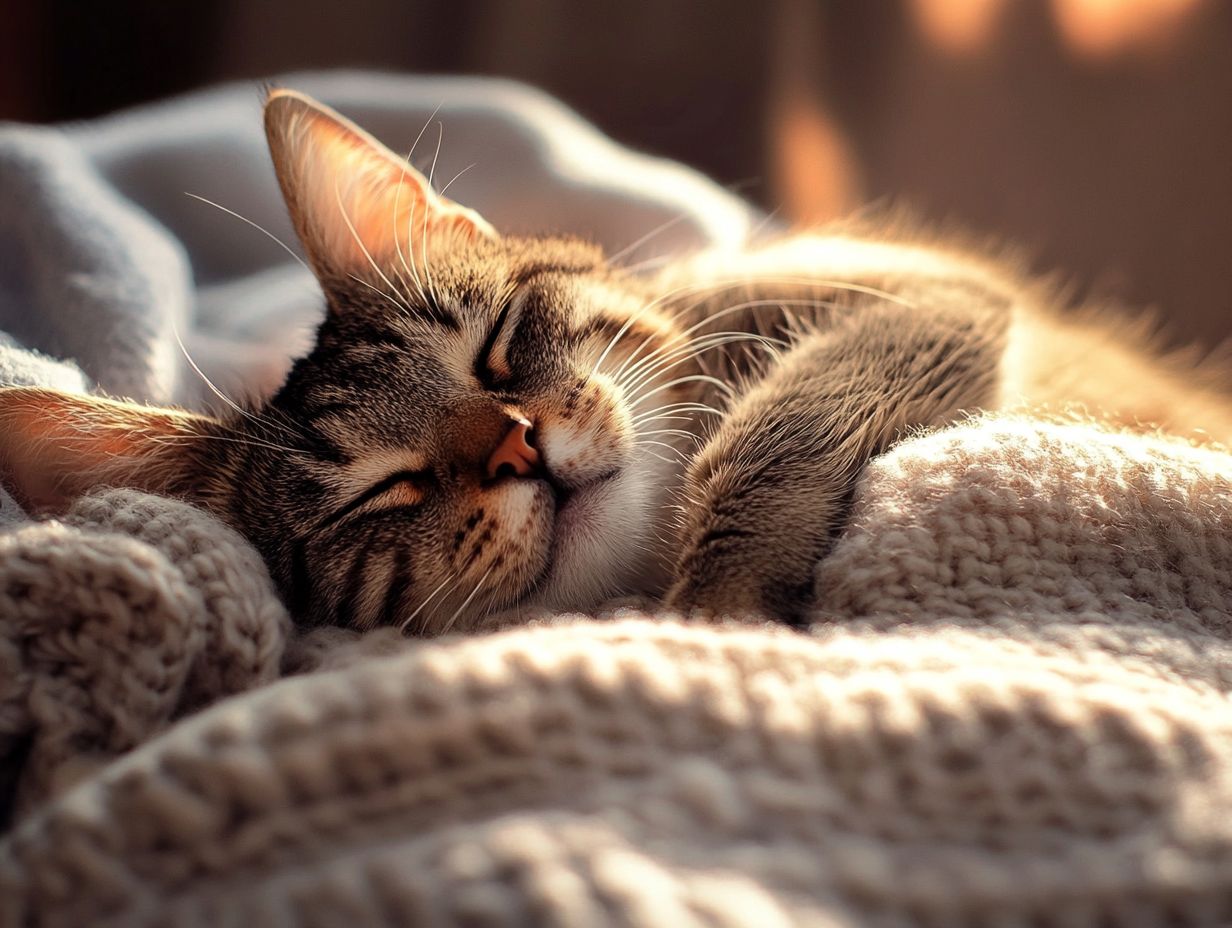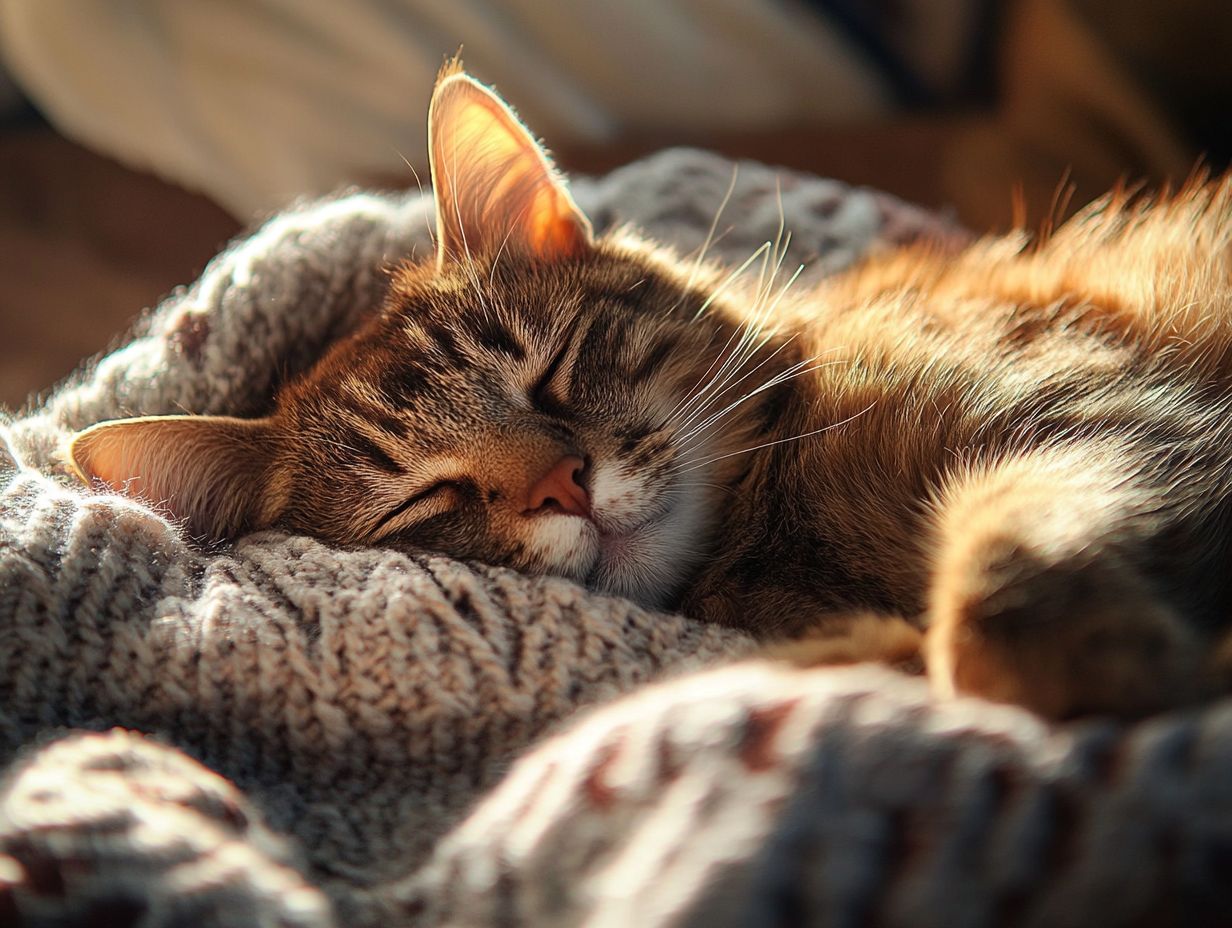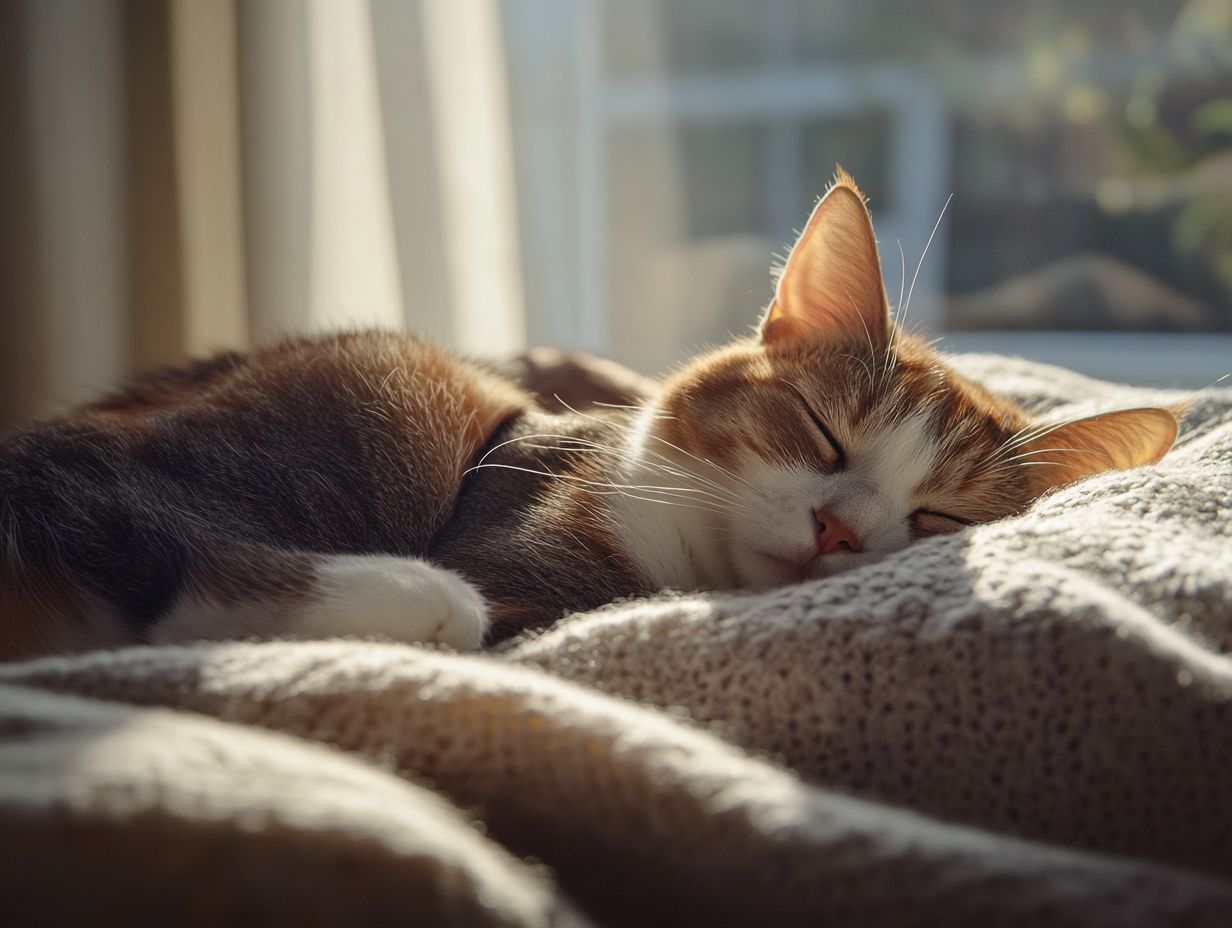The sound of a cat purring is often regarded as one of the most soothing in the animal kingdom, commonly associated with contentment and comfort. However, have you ever pondered what actually causes cats to purr and the reasons behind this behavior?
In this article, we will delve into the science of cat purring, exploring the mechanics of how it occurs and the various theories regarding its purpose. We will also dispel common misconceptions, examine other feline vocalizations, and interpret purring in different contexts.
Join us as we uncover the mystery of cat purring!
The Science Behind Cat Purring

Cat purring is a fascinating aspect of feline behavior that has been explored from various scientific and evolutionary viewpoints. The soothing sound of a cat’s purr is typically associated with the cat’s comfort and relaxation; however, research has aimed to uncover the mechanisms behind purring, the frequency ranges involved, and the potential health benefits it may offer for both cats and humans.
Investigations into the purring mechanism have examined the anatomical components that contribute to purring, as well as its role in broader contexts such as feline communication and the human-animal bond.
Understanding the Mechanism
The purring mechanism in domestic cats is a result of their unique anatomy and the production of sound waves during this behavior. Cats generate the purring sound by rapidly contracting and relaxing the muscles within their larynx, or voice box, which creates a specific frequency range of vibrations.
This process is facilitated by the simultaneous actions of the diaphragm and the muscles surrounding the larynx, which open and close the space between the vocal cords to control the flow of air. As air passes through this partially closed space, it produces sound waves that create the characteristic purr.
The frequency of these vibrations typically ranges between 25 and 150 Hertz, a range that is audible to humans and may have theoretically beneficial effects. Resonating chambers, such as the thoracic cavity, help amplify the sound, allowing it to resonate throughout the cat’s body and be heard by those nearby.
This biological adaptation serves multiple functions, including communication and self-soothing.
Theories on Why Cats Purr

Theories regarding why cats purr encompass their evolutionary purpose and the nature of feline communication. Some researchers believe that purring serves as a form of social interaction between cats and humans, while others suggest that it functions as a means of relieving stress or providing comfort during moments of fear or anxiety.
Communication and Bonding
Purring plays a crucial role in feline communication, serving as a comforting sound that enhances the emotional bond between cats and their owners. This auditory signal often emerges during moments of relaxation and social interaction, reinforcing feelings of safety and affection.
When a cat curls up in a lap or nuzzles against a person’s hand, the soft vibrations of purring evoke a sense of peace and connection, drawing the human closer into the cat’s world. This unique form of non-verbal communication not only indicates happiness but also serves as an invitation for interaction and trust.
For instance, during playtime, a cat may purr softly while engaging in gentle wrestling with its owner, creating an atmosphere of mutual enjoyment. Additionally, in moments of stress or illness, the soothing sound of purring can have therapeutic effects, easing anxiety for both the feline and its human companion, thereby further solidifying their emotional connection.
Healing and Self-Soothing

The health benefits of a cat’s purring extend beyond mere comfort. Research suggests that the vibrations produced during purring can have a calming effect, aiding in stress relief and anxiety reduction for both cats and their owners.
These frequencies may even stimulate the release of endorphins, contributing to overall well-being. In fact, studies indicate that the frequency of a cat’s purr, which ranges from 25 to 150 Hertz, falls within a range known for its healing properties across various tissues. This purring supports not only mental health but also physical recovery processes, such as improved bone density and the healing of fractures.
Pet owners often report that being near a purring cat helps lower blood pressure and fosters a general sense of calm. These factors create a feedback loop in which the emotional bond between cats and their owners promotes feelings of happiness, resulting in an emotionally supportive and stable environment.
Common Misconceptions about Cat Purring
Cat purring is a well-known behavior, yet several myths surrounding it can mislead cat owners in interpreting their feline’s actions and emotional states. For instance, some myths suggest that purring exclusively signifies a cat’s happiness, even though purring can also be a response to stress or a sign of discomfort in certain situations.
Mythbusting and Clarifying Facts

Mythbusting is essential for clarifying the truths about feline behavior, particularly concerning the various vocalizations and cues that cats exhibit, including purring. One prevalent myth is that all purring signifies happiness; however, it can also indicate pain or anxiety. This misconception can lead to a misunderstanding of a cat’s emotional state.
While many pet cats do purr when they are happy, it is crucial to recognize that they may also purr when they are stressed, such as during a visit to the vet or while recovering from an injury.
Research has demonstrated that a cat’s purr frequency can aid in healing and reduce stress, indicating that purring serves multiple purposes beyond just expressing happiness. Understanding this nuance enables caregivers to attend to a cat’s needs more effectively, fostering a deeper bond of understanding and empathy.
Other Sounds Cats Make
Cats communicate through a variety of vocalizations, in addition to purring. Each of these sounds serves specific functions in both cat-to-cat and cat-to-human communication.
Feline vocalizations include meows, trills, chirps, and growls, each expressing different needs, emotions, and behavioral signals.
Exploring Different Feline Vocalizations
Cats use various vocalizations to convey their emotions and needs. By understanding how different sounds function in the lives of different cats, owners can gain insight into their pets’ personalities and feelings. This guide to feline vocalizations will explore the different sounds cats make and their meanings.
For instance, a long meow may indicate that a cat is hungry or seeking attention, while a series of short, quick, high-pitched sounds may serve as an invitation to play. Trilling is another common vocalization that cats use, often to greet their humans; this sound can express a range of emotions, including excitement or affection.
By understanding these vocalizations, owners can strengthen their bond with their cats and promote better overall well-being.
Cat Purring in Different Situations
Cats purr in a variety of situations, and each instance can provide insight into their emotional states and instincts. Understanding the contexts in which cats purr enables owners to better interpret their feline companions’ behavior and discern what it might signify.
Interpreting Purring in Different Contexts
Understanding feline purring within context is essential for interpreting their emotional and behavioral cues. For instance, a cat that purrs while being petted may be expressing relaxation, whereas purring during stressful situations may indicate a stress response rather than contentment.
The subtleties of feline purring can also be observed in other scenarios, such as interactions with other pets or in response to injuries. A cat in a stressful environment, like a veterinarian’s office, may purr repeatedly as a form of self-soothing to cope with anxiety.
Similarly, after sustaining a minor injury, a cat may purr not only to indicate that it is in pain but also as a way to comfort itself. Recognizing these contextual cues can enhance our understanding of a cat’s emotional world and strengthen the bond between cats and their human companions.
